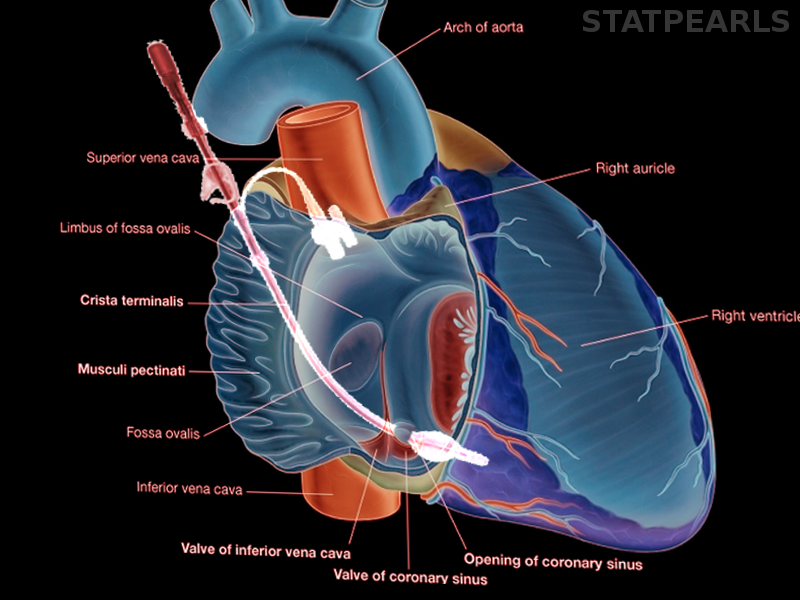[1]
Ali JM, Miles LF, Abu-Omar Y, Galhardo C, Falter F. Global Cardioplegia Practices: Results from the Global Cardiopulmonary Bypass Survey. The journal of extra-corporeal technology. 2018 Jun:50(2):83-93
[PubMed PMID: 29921986]
Level 3 (low-level) evidence
[2]
Chambers DJ, Fallouh HB. Cardioplegia and cardiac surgery: pharmacological arrest and cardioprotection during global ischemia and reperfusion. Pharmacology & therapeutics. 2010 Jul:127(1):41-52. doi: 10.1016/j.pharmthera.2010.04.001. Epub 2010 Apr 14
[PubMed PMID: 20398698]
[3]
Matte GS, del Nido PJ. History and use of del Nido cardioplegia solution at Boston Children's Hospital. The journal of extra-corporeal technology. 2012 Sep:44(3):98-103
[PubMed PMID: 23198389]
[4]
Lopes JB, Santos CCMD Júnior. Coronary Perfusion Pressure during Antegrade Cardioplegia in On-Pump CABG Patients. Brazilian journal of cardiovascular surgery. 2017 May-Jun:32(3):171-176. doi: 10.21470/1678-9741-2017-0035. Epub
[PubMed PMID: 28832794]
[5]
Katayama O, Amrani M, Ledingham S, Jayakumar J, Smolenski RT, Severs N, Rothery S, Yacoub MH. Effect of cardioplegia infusion pressure on coronary artery endothelium and cardiac mechanical function. European journal of cardio-thoracic surgery : official journal of the European Association for Cardio-thoracic Surgery. 1997 Apr:11(4):751-62
[PubMed PMID: 9151049]
[7]
Watanabe G, Ishikawa N. Alternative method for cardioplegia delivery during totally endoscopic robotic intracardiac surgery. The Annals of thoracic surgery. 2014 Sep:98(3):1129-31. doi: 10.1016/j.athoracsur.2014.02.070. Epub
[PubMed PMID: 25193212]
[8]
Ward AF, Loulmet DF, Neuburger PJ, Grossi EA. Outcomes of peripheral perfusion with balloon aortic clamping for totally endoscopic robotic mitral valve repair. The Journal of thoracic and cardiovascular surgery. 2014 Dec:148(6):2769-72. doi: 10.1016/j.jtcvs.2014.05.035. Epub 2014 May 21
[PubMed PMID: 24952820]
[9]
Yeung KK, Groeneveld M, Lu JJ, van Diemen P, Jongkind V, Wisselink W. Organ protection during aortic cross-clamping. Best practice & research. Clinical anaesthesiology. 2016 Sep:30(3):305-15. doi: 10.1016/j.bpa.2016.07.005. Epub 2016 Aug 20
[PubMed PMID: 27650341]
[10]
Fernando RJ, Johnson SD. Inability to Utilize Retrograde Cardioplegia due to a Persistent Left Superior Vena Cava. Case reports in anesthesiology. 2017:2017():4671856. doi: 10.1155/2017/4671856. Epub 2017 Dec 3
[PubMed PMID: 29333298]
Level 3 (low-level) evidence
[11]
Goyal SK, Punnam SR, Verma G, Ruberg FL. Persistent left superior vena cava: a case report and review of literature. Cardiovascular ultrasound. 2008 Oct 10:6():50. doi: 10.1186/1476-7120-6-50. Epub 2008 Oct 10
[PubMed PMID: 18847480]
Level 3 (low-level) evidence
[12]
Santoscoy R, Walters HL 3rd, Ross RD, Lyons JM, Hakimi M. Coronary sinus ostial atresia with persistent left superior vena cava. The Annals of thoracic surgery. 1996 Mar:61(3):879-82
[PubMed PMID: 8619710]
[13]
Baker RA, Bronson SL, Dickinson TA, Fitzgerald DC, Likosky DS, Mellas NB, Shann KG, International Consortium for Evidence-Based Perfusion for the American Society of ExtraCorporeal Technology. Report from AmSECT's International Consortium for Evidence-Based Perfusion: American Society of Extracorporeal Technology Standards and Guidelines for Perfusion Practice: 2013. The journal of extra-corporeal technology. 2013 Sep:45(3):156-66
[PubMed PMID: 24303597]
[14]
Mankad PS, Chester AH, Yacoub MH. Role of potassium concentration in cardioplegic solutions in mediating endothelial damage. The Annals of thoracic surgery. 1991 Jan:51(1):89-93
[PubMed PMID: 1898693]
[15]
Siddiqi S, Blackstone EH, Bakaeen FG. Bretschneider and del Nido solutions: Are they safe for coronary artery bypass grafting? If so, how should we use them? Journal of cardiac surgery. 2018 May:33(5):229-234. doi: 10.1111/jocs.13539. Epub 2018 Feb 14
[PubMed PMID: 29444545]
Level 2 (mid-level) evidence
[16]
Comentale G, Giordano R, Palma G. Comparison of the different cardioplegic strategies in cardiac valves surgery: who wins the "arm-wrestling"? Journal of thoracic disease. 2018 Feb:10(2):714-717. doi: 10.21037/jtd.2018.01.133. Epub
[PubMed PMID: 29607140]
[17]
Mishra P, Jadhav RB, Mohapatra CK, Khandekar J, Raut C, Ammannaya GK, Seth HS, Singh J, Shah V. Comparison of del Nido cardioplegia and St. Thomas Hospital solution - two types of cardioplegia in adult cardiac surgery. Kardiochirurgia i torakochirurgia polska = Polish journal of cardio-thoracic surgery. 2016 Dec:13(4):295-299. doi: 10.5114/kitp.2016.64867. Epub 2016 Dec 30
[PubMed PMID: 28096823]
[18]
Gong B, Ji B, Sun Y, Wang G, Liu J, Zheng Z. Is microplegia really superior to standard blood cardioplegia? The results from a meta-analysis. Perfusion. 2015 Jul:30(5):375-82. doi: 10.1177/0267659114530454. Epub 2014 Apr 22
[PubMed PMID: 24756305]
Level 1 (high-level) evidence
[19]
Canty DJ, Joshi P, Royse CF, McMillan J, Tayeh S, Smith JA. Transesophageal Echocardiography Guidance of Antegrade Cardioplegia Delivery for Cardiac Surgery. Journal of cardiothoracic and vascular anesthesia. 2015 Dec:29(6):1498-503. doi: 10.1053/j.jvca.2015.03.009. Epub 2015 Mar 13
[PubMed PMID: 26142365]
[20]
Hillis LD, Smith PK, Anderson JL, Bittl JA, Bridges CR, Byrne JG, Cigarroa JE, DiSesa VJ, Hiratzka LF, Hutter AM Jr, Jessen ME, Keeley EC, Lahey SJ, Lange RA, London MJ, Mack MJ, Patel MR, Puskas JD, Sabik JF, Selnes O, Shahian DM, Trost JC, Winniford MD, Jacobs AK, Anderson JL, Albert N, Creager MA, Ettinger SM, Guyton RA, Halperin JL, Hochman JS, Kushner FG, Ohman EM, Stevenson W, Yancy CW, American College of Cardiology Foundation/American Heart Association Task Force on Practice Guidelines. 2011 ACCF/AHA guideline for coronary artery bypass graft surgery: executive summary: a report of the American College of Cardiology Foundation/American Heart Association Task Force on Practice Guidelines. The Journal of thoracic and cardiovascular surgery. 2012 Jan:143(1):4-34. doi: 10.1016/j.jtcvs.2011.10.015. Epub
[PubMed PMID: 22172748]
Level 1 (high-level) evidence

